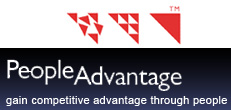“Capacity to forecast is limited by the expectation that in five years things will be the same as now only different”
Identifying executive leadership potential is about building capability for the range of anticipated needs and having the flexibility to respond to the unexpected.
There is an extensive literature on leadership capabilities, particularly behaviourally based leadership. This is generally centred around self awareness, listening skills and inspiring others. However there is far less information about how to identify potential executive leaders and what types of roles they will need to perform over a three to five years and longer time spans.
The key to identifying executive leadership potential is to apply the concept of organisation levels of executive work. To do this it is necessary to understand how executive work increases in complexity as the context within which the executive must perform increases in complexity. In broad terms it is about understanding the differences between supervision, middle management functioning and general management functioning.
How to do this
Criteria are developed to evaluate individual managers in terms of their current effectiveness level and their future effectiveness level expressed in estimated time frames eg, within 12 months, one to two years, three to five years.
An extract of the Management Levels Development Potential Assessment Criteria is provided below. The extract contains two organisation levels of work for line management. These levels relate to Operations Manager and General Manager Operations roles.
The key issue is that the Development Potential Criteria are developed consistent with standard organisation levels of work. If this approach is adopted the results of evaluations can provide a realistic indicator of the manager’s current level of effectiveness and future level of effectiveness eg, current level of effectiveness may be evaluated as middle management however there may be indicators that the manager is capable of effectively functioning at the general management level within five years.
Management Levels – Development Potential Assessment Criteria (Extract)
|
Effectiveness Criteria
|
Level 1 (Operations Manager)
|
Level 2 (General Manager Operations)
|
|
Business Knowledge Scope
|
Detailed understanding of; the manufacturing plant’s role and its relationship with other areas in the company.
Is able: to coordinate with other areas and activities of the company.
|
National understanding of: the company ‘s major business sectors; industry and major competitors.
Is able: to develop national business strategies; to monitor the operations of competitors.
|
|
Management Planning Effectiveness
|
Is able: to develop annual plans; to generate alternative plans; to review annual planning processes and methodologies; to Identify alternatives; to recommend and/or implement changes.
|
Is able; to develop five year national operation plans; to develop alternative five year plans; to review and recommend changes to the five year planning process.
|
|
Leadership
|
Is able: to lead up to 300 people through a number of direct supervisors; to ensure output meets deadlines and quality requirements; to guide, motivate, coach and counsel supervisory staff; to conduct performance appraisals, train and develop supervisors; to improve supervisors responsiveness to change.
|
Is able: to lead a group of Operations Managers; to manage the national integration of the major operations functions; to ensure the operations function performs consistent with the business strategy; to ensure the appropriate development of Operations Managers.
|
|
Judgement & Decision Making
|
Is able: to judge and decide based on learned experience over a number of years; to generate alternative solutions and related consequences to complex situations; to exercise judgement to choose the optimal solution; to develop new approaches and methodologies to typical management issues.
|
Is able: to identify major national operations issues and their impact on the business; to develop alternative solutions and related consequences; to generate innovative solutions based on an understanding of the interrelationships between issues and solutions; to identify and recommend alternative national operation plans and understand their consequences on overall business strategy.
|
© PeopleAdvantage Pty Limited 2008 All Rights Reserved
Psychometric Testing For Executive Leadership Potential
In conjunction with the use of Development Potential Assessment Criteria it is essential to ensure that managers selected for leadership development possess essential general management characteristics. If a manager does not possess these characteristics it is unlikely he/she will effectively perform beyond the middle management level. Moreover, there may already be managers in middle management roles that actually only function at the specialist level i.e. Technical Professional level.
There is an enormous amount of material in the form of books, articles and training programmes espousing the characteristics of good leadership. Moreover, there are a large number of psychometric tests designed to measure many of these characteristics.
Unfortunately, much of this material, including psychometric testing, is aimed at the team leadership, supervisory, middle management level rather than at the general management, senior executive/Chief Executive Officer level.
General Management Capability
Notwithstanding the preceding comments there are psychometric assessment processes that effectively test for general management capability and can assist in identifying executive leadership potential. The characteristics identified by these assessment processes include:
Social Role Skills;
{ Strong self-confidence
{ Balanced extroversion, introversion
{ Spontaneous and not overly reserved
Reaction to pressure;
{ Initiative
{ High level of general drive
{ Positive response to setbacks
{ Balanced enthusiasm for life
Intellectual;
{ Planning and organising in an integrated manner
{ Intuition and originality
{ Good judgement
{ Conceptual ability
{ Able to think for oneself
Some psychological characteristics which lead to failure at the general management level include:
{ Narcissism
{ Psychopathy
{ Paranoia
{ Obsessive-compulsive
{ Excessive introversion or extroversion
Summary
This brief article outlines a methodology for identifying Executive Leadership Potential. Our experience suggests that this methodology effectively identifies high potential executive leadership people. Is also cost effective.
Dallas Burgess
Email: dallasb@peopleadvantage.com.au
© Organisation Renewal Pty Limited 2008 All Rights Reserved
Is the threat of
note cyber bullying as bad as the media makes it out to be
.

